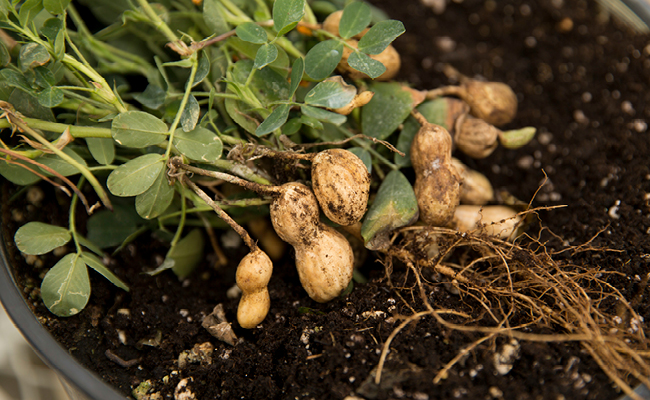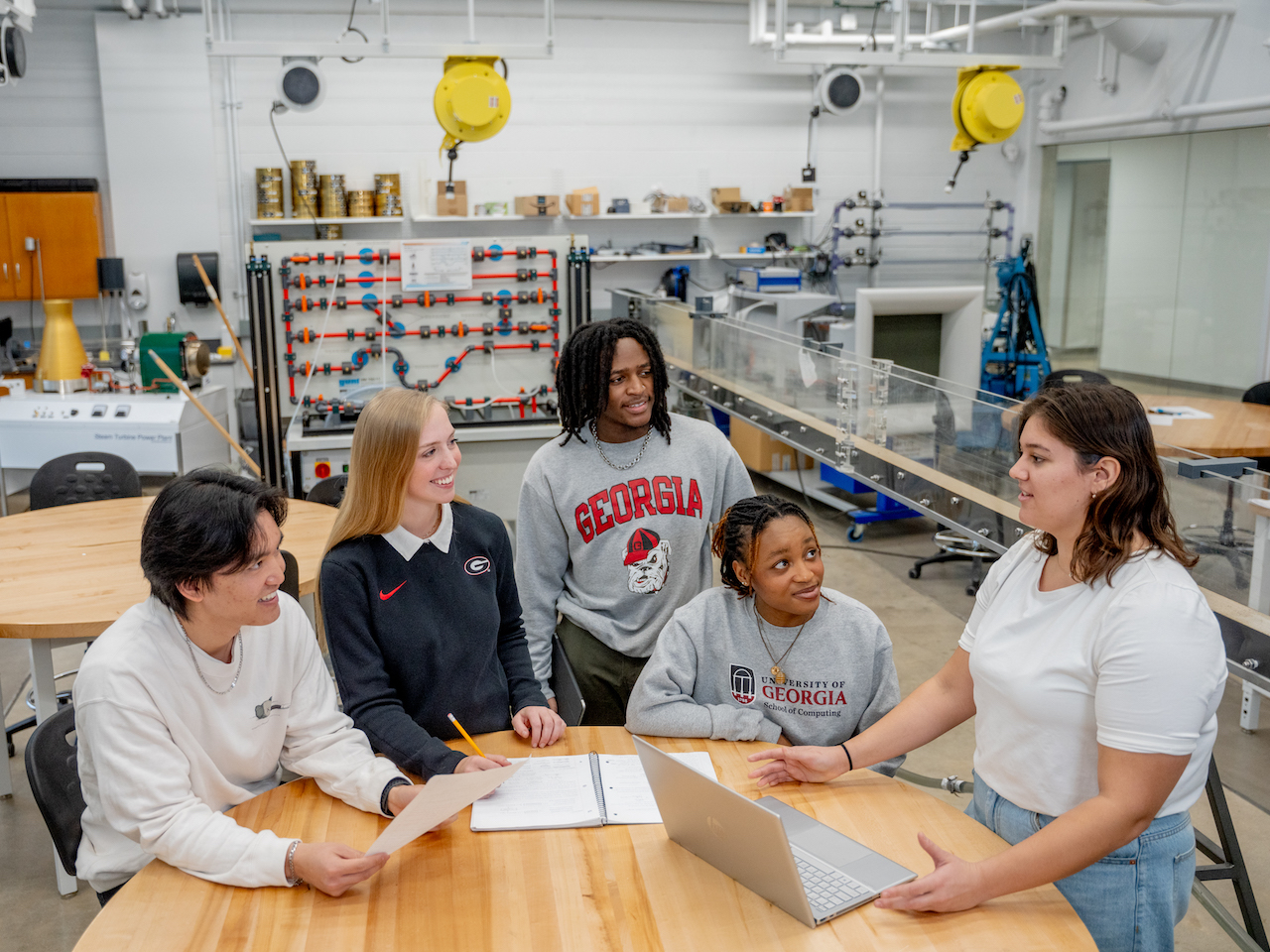 Georgia’s peanut crop generates more than $600 million annually, but determining the optimal harvest time for the crop can be tricky. Current crop assessment tools are time consuming and prone to human error, leading to millions of dollars in lost yield each year.
Georgia’s peanut crop generates more than $600 million annually, but determining the optimal harvest time for the crop can be tricky. Current crop assessment tools are time consuming and prone to human error, leading to millions of dollars in lost yield each year.
Researchers in the University of Georgia College of Engineering are working to help farmers improve the quality and quantity of their yield by providing them with faster and more accurate data. In a new study published in Springer Precision Agriculture, the UGA team presents a portable, smartphone-based system for peanut harvest analysis.
One of the primary methods now used to determine peanut maturity is a peanut profile board, an eye test based on the close relationship between the pod’s color and its maturity. This method requires farmers to dig up samples from their field for assessment by a county agent. The harvest day for the peanuts is estimated based on the percentage of black peanuts in a sample.
“As peanut fields tend to be widely scattered, the collection, shipping and analysis can take days to complete,” said Rui Li, the study’s lead author and a 2020 graduate of UGA with a Ph.D. in engineering. “In contrast, it takes three to five minutes to obtain a printed report from our system.”
To address the drawbacks of current assessment methods, the UGA researchers integrated smartphone technology with a portable photo station. The semi-automated system allows farmers to collect, store and access harvest-related data at their own farm and wirelessly send the information to a county agent for further evaluation.
To use the system, a farmer places samples on a board designed to hold peanuts in individual slots and slides the board into the bottom of the photo station. Placing a smartphone at the top the photo station, the user snaps a picture of the crop sample. From there, the team’s smartphone application analyses the color of the peanuts and feeds the information to an online database. The application allows the user to customize their report by inputting information such as the field location, the type of peanut and the disease condition.
According to the researchers, this quicker assessment tool will allow farmers to continuously monitor the maturity of their crop and account for factors such as soil type and weather.
“Under-matured or over-matured peanuts can have a high level of aflatoxin, a toxin produced by fungi found on some agricultural crops,” said Li. “If a farmer can continuously track the level of peanut maturity, they will be able to start the harvesting process in a suitable time window and reduce the yield loss caused by aflatoxin.”
The researchers conducted 52 on-site tests to validate the system’s accuracy. Compared with human graders, the system demonstrated error rates of 9 percent in calculating the percentage of black-and-brown peanuts; 18.8 percent in calculating the percentage of black peanuts; and 5.8 percent in calculating the total number of peanuts in a sample. Despite those discrepancies, the researchers say the proof-of-concept system demonstrated the potential to provide fast and reliable results to peanut growers.
“The system can be improved in two ways,” said Li. “One is to further optimize the light conditions for consistent image quality, and the other is to improve the color detection function using a data-driven algorithm.”
Once a sufficient amount of human grading data is recorded in the database, the team believes machine learning algorithms could further improve the system’s accuracy. It may be possible, they said, to develop a predictive model for peanut harvest based on the data.
The project, supported by National Science Foundation ICORP and Venturewell grants as well as the Georgia Peanut Commission, has generated two pending utility patents.
“The development of this system is not only a significant time saver for peanut farmers, it will improve our ability to determine maturity which is directly related to peanut flavor for the consumer,” said Don Koehler, executive director of the Georgia Peanut Commission.
In addition to Li, the research team includes Zhuo Zhao, a 2020 UGA Ph.D. graduate in engineering; W. Scott Monfort, an associate professor in the College of Agricultural and Environmental Sciences; Kyle Johnsen, an associate professor in the College of Engineering; Donald Leo, dean of the College of Engineering; and Zion Tse, a former associate professor in the College of Engineering who now serves as a professor and chair in medical robotics at the University of York in the United Kingdom.
The study is available here.
By Mike Wooten | Photo: Andrew Davis Tucker, University of Georgia


